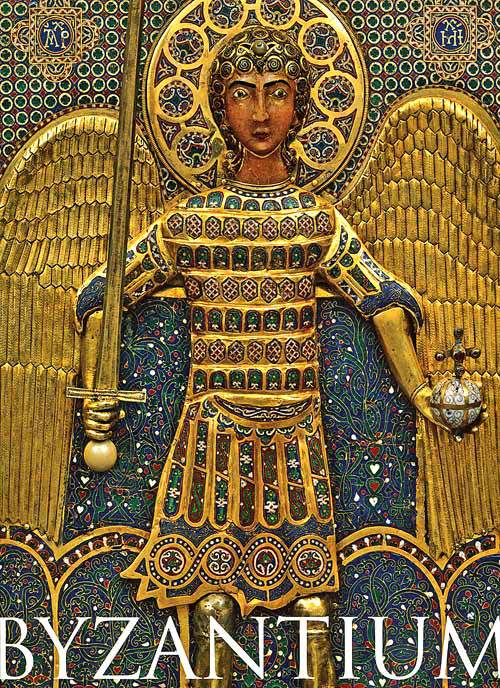A map of western Asia Minor, showing the routes taken by Christian armies during the Crusade of 1101.
The Byzantine Empire faced external threats to its security as well. In the west, the Normans were menacing the remaining Byzantine possessions in Italy. A much greater threat, however, came from the world of Islam. By the mid-tenth century, the Islamic empire led by the Abbasid caliphate in Baghdad was disintegrating. An attempt was made around that time to unify the Islamic world under the direction of a Shi’ite dynasty known as the Fatimids. Originating in North Africa, they conquered Egypt and founded the new city of Cairo as their capital. In establishing a Shi’ite caliphate, they became rivals to the Sunni caliphate of Baghdad and divided the Islamic world.
The Fatimid dynasty prospered and soon surpassed the Abbasid caliphate as the dynamic center of Islam. Benefiting from their position in the heart of the Nile delta, the Fatimids played a major role in the regional trade passing from the Mediterranean to the Red Sea and beyond. They were tolerant in matters of religion and created a strong army by using nonnative peoples as mercenaries. One of these peoples, the Seljuk Turks, soon posed a threat to the Fatimids themselves.
A nomadic people from Central Asia, the Seljuk Turks had been converted to Islam. As their numbers increased, they moved into the eastern provinces of the Abbasid Empire and in 1055 captured Baghdad and occupied the rest of the empire. When they moved into Asia Minor— the heartland of the Byzantine Empire and its main source of food and manpower—the Byzantines were forced to react. Emperor Romanus IV led an army of recruits and mercenaries into Asia Minor in 1071 and met Turkish forces at Manzikert, where the Byzantines were soundly defeated. Seljuk Turks then went on to occupy much of Anatolia, where many peasants, already disgusted by their exploitation at the hands of Byzantine landowners, readily accepted Turkish control.
A New Dynasty
After the loss at Manzikert, factional fighting erupted over the emperorship until the throne was seized by Alexius Comnenus (1081–1118), who established a dynasty that breathed new life into the Byzantine Empire. Under Alexius, the Byzantines were victorious on the Greek Adriatic coast against the Normans, defeated their enemies in the Balkans, and stopped the Turks in Anatolia. In the twelfth century, the Byzantine Empire experienced a cultural revival and a period of prosperity, fueled by an expansion of trade. The era was also marked by the increased importance of aristocratic families, especially those from a military background. In fact, Alexius’ power was built on an alliance of the Comnenus family with other aristocratic families. But both the Comneni dynasty and the revival of the twelfth century were ultimately threatened by Byzantium’s encounters with crusaders from the west.
Impact of the Crusades
Lacking the resources to undertake additional campaigns against the Turks, Emperor Alexius turned to the west for military assistance and asked Pope Urban II for help against the Seljuk Turks. Instead of the military aid he had expected, the pope set in motion the First Crusade, a decision that created enormous difficulties for the Byzantines. To pursue the goal of liberating Palestine from the Muslims, western crusading armies would have to go through Byzantine lands to reach their objective. Alexius, and especially his daughter, Anna Comnena (who was also the Byzantine Empire’s only female historian), were fearful that ‘‘to all appearances they were on pilgrimage; in reality they planned to dethrone Alexius and seize the capital.’’
The Byzantines became cautious; Alexius requested that the military leaders of the First Crusade take an oath of loyalty to him and promise that any territory they conquered would be under Byzantine control. The crusaders ignored the emperor’s wishes, and after their conquest of Antioch, Jerusalem, and additional Palestinian lands, they organized the four crusading states of Edessa, Antioch, Tripoli, and Jerusalem. The Byzantines now had to worry not only about the Turks in Anatolia but also about westerners in the crusading states. The Second and Third Crusades posed similar difficulties for the Byzantine emperors.
The Crusades also increased the impact of western ideas on the Byzantine Empire. In the mid-twelfth century, the Byzantine emperor Manuel I (1140–1183) introduced the western practice of knightly jousting to the Byzantine aristocracy. The Byzantine emperors also conferred trading concessions on the Italian city-states of Venice, Pisa, and Genoa, and in the course of the century, probably sixty thousand western Europeans came to live in Constantinople. But the presence of westerners and western practices also led to a growing hostility. Byzantine writers began to denounce western attitudes, and westerners often expressed jealousy of Constantinople’s wealth. In 1171, Emperor Manuel I expelled the Venetians and seized their goods and ships, arousing in Venice a desire for revenge, no doubt a factor behind the disastrous Fourth Crusade in 1204.
